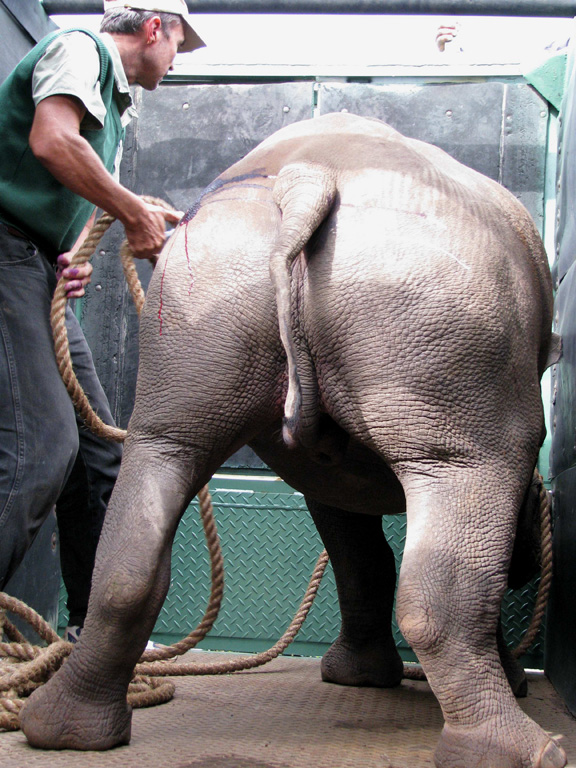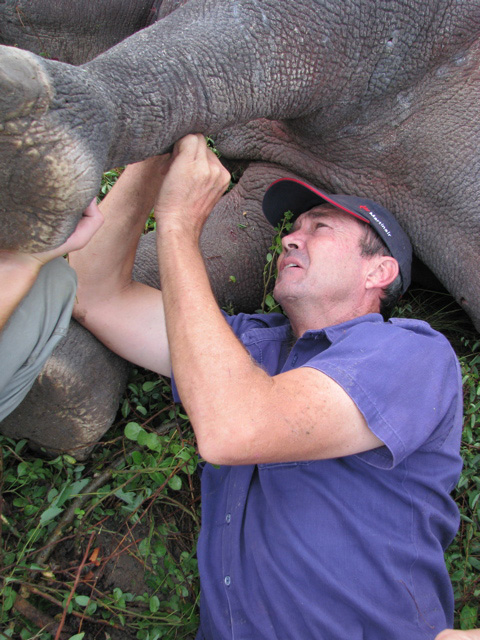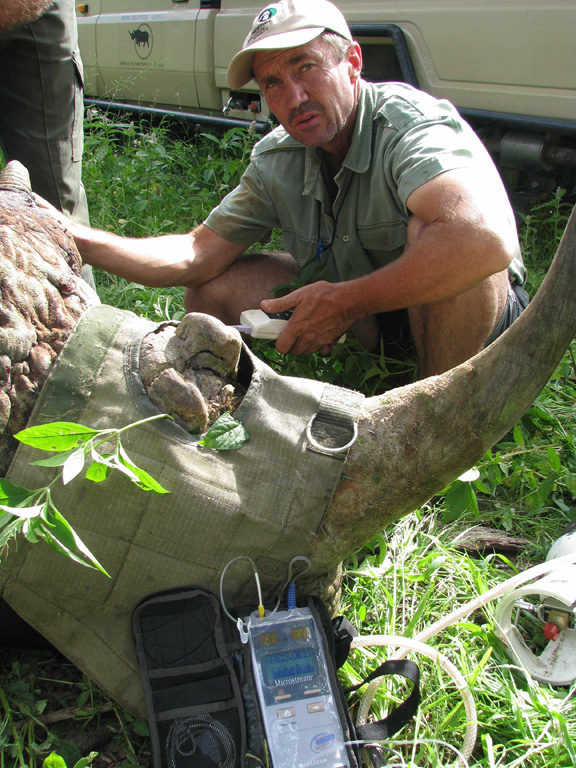Doctor Peter vdB Morkel
 Dr. Pete Morkel is a native of Zimbabwe and is a graduate of the University of Pretoria where he received his Bachelor of Veterinary Science. Pete has been working full time as a wildlife doctor ever since. His first real job in the field of wild animal medicine was as head of the Namibian Game Capture Unit based in Windhoek followed by 2 years working as the veterinarian in Etosha National Park. Pete then moved onto become the General Manager for Game Capture and Veterinary Services for the South African National Parks Board, a position that gave him extensive exposure to wildlife health and conservation issues in southern Africa. As the Rhino Coordinator for the Frankfurt Zoological Society Pete managed the Ngorongoro Crater Rhino Project for 6 years. His latest work allows Pete the flexibility to travel to participate in many diverse conservation projects ranging from rare rhino relocations to rescue of the Giant Sable.
Dr. Pete Morkel is a native of Zimbabwe and is a graduate of the University of Pretoria where he received his Bachelor of Veterinary Science. Pete has been working full time as a wildlife doctor ever since. His first real job in the field of wild animal medicine was as head of the Namibian Game Capture Unit based in Windhoek followed by 2 years working as the veterinarian in Etosha National Park. Pete then moved onto become the General Manager for Game Capture and Veterinary Services for the South African National Parks Board, a position that gave him extensive exposure to wildlife health and conservation issues in southern Africa. As the Rhino Coordinator for the Frankfurt Zoological Society Pete managed the Ngorongoro Crater Rhino Project for 6 years. His latest work allows Pete the flexibility to travel to participate in many diverse conservation projects ranging from rare rhino relocations to rescue of the Giant Sable.
Dr. Robin has worked with Pete in various capacities and always finds him to be a scientist with a pragmatic approach to his work - looking at the outcome of a particular event with an eye toward the lessons that can be learned from them. Pete is recognized as one of the leaders in rhinoceros capture and translocation around the world and it is here that he has made his greatest contributions. Always thinking about ways to improve the process and outcomes of rhinoceros anesthesia, Pete is currently leading explorations into effects of the capture process on muscle function, respiration and posture.


Aside from animals, Pete and his wife Estelle have two children that also embrace the natural world. Daughter, Cheri, is working toward a career as a veterinary technician while son, Benoit, is exploring biology and the humanities. He spent several months working with Malaysian sun bears in Vietnam. The Morkel family share a deep love for the rugged and beautiful landscapes of Africa. They recently purchased a large farmstead along the rugged and remote Orange River in southern Namibia that will become a future refuge for family and wild animals alike.
